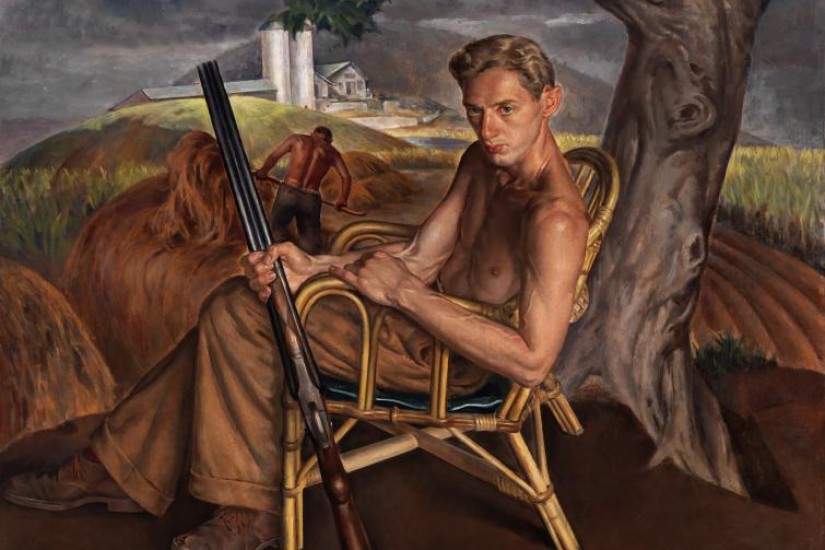Following the Civil War, portraiture helped to glamorize that transition by illustrating tough guys and girls who bore arms with self-confidence and swagger.
Setting aside military images, where the inclusion of guns is both necessary and inevitable; portraits of American citizens with guns fall into three symbolic "types": the gun as a symbol of bravery; the gun as symbol of defense of land; and the gun as ornament or theatrical prop. Advances in photographic reproduction and cinematography especially at the turn of the 20th century eventually saw the gun used as an artistic device that connected the imaginary world of entertainment to that of the viewer in the real world.
The notion of "gun vision" put forth by art historian Alan Braddock in his 2006 article "Shooting the Beholder," suggests that portrait artists underplayed and deemphasized the implied violence of a pointed gun as a way to address a growing public desire for attention and spectacle.
The gun as a symbol-of-bravery makes its appearance in the mid-19th century in portraits of Native Americans and African-Americans, primarily reserved for those who resisted capture, slavery or relocation. Significantly in these pictures, the rifle is highly symbolic and placed at a distance to the figure; stock-end down on the ground and pointed towards the sky at little risk of being fired.
In 1837, artist Charles Bird King painted a full-length portrait of the Chippewa chief, Okee-Makee-Quid, holding a ceremonial pipestem vertically alongside his body. One year later, George Catlin’s portrait of Osceola depicts the Seminole warrior standing with the rifle he used to kill the U.S. Indian Agent Wiley Thompson in defense of tribal lands. Tricked into capture under the pretense of negotiating a truce, Osceola eventually died in captivity, but not before Catlin visited him in prison to create a portrait intended to honor his bravery that showed the Indian holding a rifle—in place of his peace pipe—parallel to his body “as the master spirit and leader of the tribe.”
Between 1836 and 1844, a three-volume portfolio of portraits published by Thomas McKenney and James Hall on The History of the Indian Tribes of North America, set the template for the display of Native chiefs most notably focused on their bright dress and beaded and feathered adornments that appeared so exotic to Euro-American audiences.
